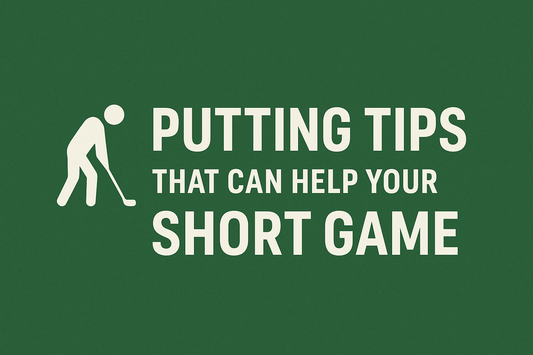I had this guy come to me completely frustrated with his short game. He was a decent player who could stripe his irons all day long, but around the greens, he was a disaster. He'd hit these perfect little chip shots that would land soft, take one hop, and then roll straight past the pin like they had somewhere important to be.

After watching him for about ten minutes, I could see the problem. He was hitting good shots to bad spots. His technique was fine, but he had no clue where balls actually wanted to go once they hit the green. Simply put, he wasn't playing to the conditions of the green. So I did something that probably seemed crazy at the time—I made him put his wedge away and handed him a putter.
Here's what most golfers don't get: every shot around the green is basically just a complicated putt. You're trying to get the ball rolling toward the hole, whether it flies there first or rolls the whole way.
It's All About the Roll, Baby

Think about it this way—when you chip from thirty feet, maybe ten feet is in the air and twenty feet is on the ground. That twenty-foot roll? Same physics as putting. Same slopes, same grain, same everything that makes your putts break left or right.
I see guys all the time who can read a putt like they're GPS navigation systems, but then they chip to the exact wrong spot because they're not thinking about what happens after the ball lands. It's like planning a road trip but only mapping out the first ten miles.
The Green Reading Game Changer
Once you start seeing greens the way a putter sees them, your whole short game clicks into place. That slope that makes your eight-footers break two inches to the left? It's going to do the same thing to your chip shots once they start rolling.
I had this breakthrough moment with a student last year. We were practicing on this green with a nasty little slope that funneled everything toward a collection area. He kept chipping balls to what looked like the perfect spot right at the pin only to watch them trickle away from the hole every single time.
Then I had him practice putt from that same landing area. Suddenly, he could see it clear as day: anything landing there was going to feed away from the cup. Started landing his chips on the high side of that slope, and boom—balls started finishing close.
Tempo Is Everything
You know what kills more short game shots than fat contact? Rushed, jerky swings from guys who think they need to "hit down" on everything. But here's the thing—your best putting stroke has this smooth, even tempo. No sudden moves, no trying to muscle it.
Take that same rhythm to your chipping, and magic happens. I tell my students to practice putting with long, smooth strokes for distance control, then grab a wedge and make the exact same motion. Don't change anything except the club in your hands.
The Touch Factor
Good putters have soft hands. They let the putter swing instead of steering it around like they're parking a truck. That same soft touch is what separates guys who can drop it close from guys who chunk it or blade it over the green.
Spend serious time on those long lag putts—40, 50, 60 footers where you're just trying to get close. You'll develop this feel for how much energy the ball needs, and that translates directly to better distance control on chips and pitches.
Stop Aiming at Flagsticks
Here's something that'll blow your mind: good putters don't just aim at the center of the cup. They pick a specific side, account for break, and aim for exactly where they want the ball to start rolling.
Same deal with short game shots. Stop just hitting it "at the flag" and start picking exact landing spots. Where do you want it to hit? How fast? What path will it take to the hole from there?
I watch guys chunk perfectly good chips because they never bothered to think about where the ball was actually supposed to end up.
Practice That Actually Makes Sense
Want to know the fastest way to improve your short game? Start every practice session with putting. Not just a few quick rolls—really work on reading greens and controlling speed. Get a feel for how balls roll on that particular day.
Then take that knowledge to your chipping. Land balls in the same spots you were just putting from. You'll be amazed how much smarter your short game gets when you're actually thinking about what happens after the ball lands.
The funny thing is, this works backwards, too. Get really good at putting, and suddenly those chips to eight feet don't scare you anymore. You know you can make those putts, so you start taking on more aggressive shots around the greens.
Your putting stroke isn't just about holing putts—it's teaching you how balls roll, how to read greens, and how to control distance. Master those skills with a putter in your hands, and your entire short game starts making a lot more sense.





